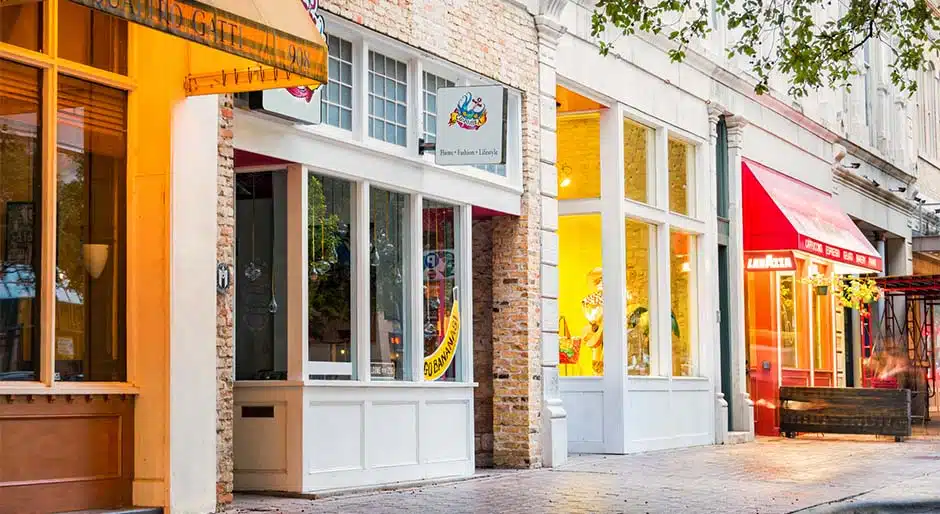Q&A about net lease/retail-related investment trends with Noah Shaffer, senior director, Confidant Asset Management

Shaffer has provided his insights on net lease/retail-related investment trends.
1. Sales at eating and drinking establishments are up over 4 percent this year, according to data from the U.S. Census Bureau, surpassing grocery sales at just 3 percent. Why is the restaurant industry considered overvalued and risky when there is growth with consumerism showing growth?
The demand for single-tenant restaurant properties in the $1.5 million to $4 million range has artificially driven prices upward and cap rates downward. There is a property for sale in Leesburg, Florida, leased for 12 years to a national chain, let’s call it Taco Drum, but with a franchisee guarantee. The property is available at a 4.5 percent cap rate and $3.4 million despite rents being $84/per square foot. Compared to comparable market rents being $27.50/per square foot. A 4.5 percent yield on a cash purchase is not a risk-adjusted return for a 20 franchise unit guarantee with rents that are triple the comparable market rents, and this is not an isolated occurrence.
The year-over-year sales growth at eating and drinking establishment is sufficient when the economy is strong, but eating out is one of the first areas that consumers cut back on when times are tight. Sales have grown, but so have labor, food, and other costs, which tighten margins for operators. Starbucks closed 600 stores in 2008 due to declining store sales. We can’t predict the future, but history always repeats itself.
2. Which restaurant tenants are riskier than others? If a property owner leases a restaurant, which is safe? Why?
I am comfortable with the restaurant sector as a tenant so long as the rents are in-line with market and are at a profitable percentage of sales. A healthy rent to sales range for restaurants is for rent to be 7 percent to 9 percent of sales. Adding a lease requirement for tenants to divulge store, and guarantor, financials is extremely valuable to landlords during their ownership of a property. This information allows them to get ahead of potential rent reduction requests and vacancies.
New construction or substantial build-outs conducted by the landlord should only be done with a strong guarantor behind the lease. There is significant risk with new construction single-tenant properties as rents are often double or triple market replacement rent.
There has been a shift toward healthier eating, with nationwide expansions of restaurant concepts that offer chicken as their primary food item. Raising Cane’s, PDQ, Slim Chicken, Pollo Tropical, and Chick-fil-A have experienced rapid expansion over the past two years. Trends fluctuate over time, and landlords should closely monitor sales performance, corporate financials, and real estate fundamentals to ensure their investment will continue to perform.
3. Can you explain the benefits of ground leases?
There are two key benefits of ground leases.
The first advantage is the tenant’s ability to depreciate leasehold improvements, potentially at a 100 percent bonus depreciation, under the Tax Cuts and Job Act Sec. 168(k) (TCJA).
The TCJA reduced the useful life of leasehold, retail, and restaurant improvements to 15 years from 39, providing a significant incentive for retail tenants to conduct their own build-out. This legislation has resulted in tenants such as Burger King, Walmart, Walgreens, and Wawa conducting the build-out of their space. Tenant investment into a property is a strong indication of their commitment to the site, putting the landlord’s mind at ease. Tenant-landlord relations have improved significantly now that tenants are incentivized to conduct build-outs themselves, rather than being threatened with litigation by the landlord to conduct required maintenance.
The second advantage is the landlord’s ability to reduce their capital commitment on the front-end of a property acquisition and receive rental rates that are closer to comparable market rates. Retail rental rates on new construction are typically based on a percentage of project costs. Commercial construction costs for single-tenant properties run between $250/square foot, to as high as $450-plus for a tenant like Starbucks. A landlord’s rental rate may increase by $20-$35/square foot NNN above the ground lease rate for build-to-suit properties. With a 20-year lease and a BBB or better rated tenant, the additional cost associated with the build-out is worthwhile. Landlords will be forced to reduce rents by 40 percent to 60 percent when the tenant vacates their property, severely decreasing the value of their property and their return on investment.
4. What is the opportunity presented by Walgreen’s store closure announcement?
Walgreens has yet to release the list of stores to be closed, but the market perception has already pushed values downward. Investment property sales of Walgreens (200 store closures in 2019) and CVS (which announced 46 store closures earlier in May 2019) have slowed down and prices have adjusted downwards as a result. Walgreens’ properties with 8 years to 12 years remaining on the lease are trading at cap rates between 6.5 percent to 7.25 percent in strong locations, with absolute net leases, and a BBB investment grade S&P credit rating. The reality is that Walgreens is closing 2 percent of their stores, and there are very few investments with investment-grade credit that yield 7 percent in today’s environment. The return becomes even more attractive when coupled with favorable debt terms and the tax advantages associated with owning real estate.
Pharmacies are shifting their store layouts to include testing laboratories and urgent care facilities in addition to the existing grocery and pharmacy components at their sites. The sites, which receive the benefit of the updated format, will be well positioned to weather any disruptions to the pharmacy industry.
Buyers must conduct thorough due diligence to avoid purchasing a Walgreens that is going to close, and hold capital reserves in preparation for a potential vacancy in 8 to12 years.
5. What other trends are you seeing with leasing activity?
New construction exists — commercial new construction is down 15 percent year-over-year as of July 2019, according to the U.S. Census — but most leases being signed are for existing buildings, within mixed-use projects, or part of retail centers. Landlords have the leverage at this stage in the cycle due to a lack of supply in key locations. We are seeing low levels of TI dollars and limited free rent being offered to tenants. TI may be as low as $10/square foot for non-anchor tenants in regional strip centers.
6. How are owners dealing with low vacancies in properties?
The short answer is that landlords are loving the low retail vacancy rates we are witnessing both at the individual property and market levels. We are seeing a significant amount of lease up and sell opportunities hit the market with 90 percent to 100 percent occupancy. Year-to-date net-lease sales volume is around $29.6 billion, according to Real Capital Analytics, with an average cap rate of 6.25 percent. Retail vacancy at the national level is around 10.1 percent, according to REIS, the lowest point since 2016.
7. What are your expectations for the leasing activity for the remainder of the year?
Retail leasing will remain strong in third quarter and fourth quarter 2019. National, and even regional, tenants are getting smarter about their site selection. Data analytics tools such as Site Zeus have helped tenants project sales based on unique real estate site criteria. Tenants are moving into properties where they are reasonably certain of success. As a result, retail tenants have remained aggressive with their expansion plans, despite the talk of a recession looming.
CAM provides portfolio and property management services to commercial real estate investors around the United States. CAM manages more than 200,000 square feet of retail, office and industrial properties across four states. The firm strives to provide commercial real estate owners with an efficient and passive ownership process, while increasing the value of their portfolio.

